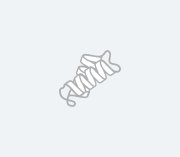Shipping: Available products typically ship within 24/48h, via priority shipping.
Do you need support? Contact Customer Service or Technical Support.
Online Account
Access or Create Your Account
Product Details
| Alternative Name |
NGF 2.5S |
|---|---|
| Biological Activity |
Neurotrophic activity was bioassayed using rat pheochromocytoma cell PC12 cultures over a period of 7-14 days. Activity is in the range of 0.5-50ng/ml. Recommended concentration to be used in vitro for maintenance of sympathetic and sensory nerve cultures is 50ng/ml medium. |
| CAS |
93928-24-6 |
| Formulation |
Lyophilized. |
| MW |
~26kDa; homodimer. |
| Purity |
≥95% (HPLC) |
| Quantity |
Concentration is estimated spectroscopically from its extinction coefficient and amino acid analysis. |
| Reconstitution |
Dilute in sterile water or DMEM to a concentration of at least 10µg/ml and store at -80°C before use. |
| Source |
Isolated from mouse submaxillary glands by a modification of the procedure described by T. Darling, et al.; Cell Culture Meth. Mol. Cell Biol. 4, 79 (1984). |
| UniProt ID |
P01139 |
Handling & Storage
| Use/Stability |
As indicated on product label or CoA when stored as recommended. Stable for 2-3 weeks when stored at room temperature. After reconstitution, stable for up to 1 week when stored at +4°C and for 4-6 weeks at -80°C. |
|---|---|
| Handling |
Do not reuse medium containing mNGF. Avoid freeze/thaw cycles. After reconstitution, prepare aliquots and store at -80°C. |
| Long Term Storage |
-20°C |
| Shipping |
Ambient Temperature |
| Regulatory Status |
RUO – Research Use Only |
|---|
- The neurotrophins and their receptors: structure, function, and neuropathology: L.M. Maness, et al.; Neurosci. & Biobehav. Rev. 18, 143 (1994), (Review), Abstract
- Role of neurotrophins in mouse neuronal development: R. Klein; FASEB J. 8, 738 (1994), (Review), Abstract
- Neurotrophic factors enter the clinic: M. Barinaga; Science 264, 772 (1994), (Review), Abstract
- Neurotrophic factors: two are better than one: R. Nishi; Science 265, 1052 (1994), (Review), Abstract
- Neurobiology. Tracking neurotrophin function: A.M. Davies; Nature 368, 193 (1994), (Review), Abstract
- Towards a comprehensive understanding of the trophic support of motoneurons: H. Thoenen, et al.; C. R. Acad. Sci. III 316, 1158 (1993), (Review), Abstract
- The changing scene of neurotrophic factors: H. Thoenen; TINS 14, 165 (1991), (Review), Abstract
- Nerve growth factor: R.A. Bradshaw; Annu. Rev. Biochem. 47, 191 (1978), Abstract
Related Products
[R112A, R113G]Brain derived neurotrophic factor precursor (mouse), (recombinant)
BML-SE548
Trk ligand

| Alternative Name | pro-BDNF |
|---|---|
| Purity | ≥99% |
| Source | Produced in E. coli. |

| Alternative Name | Inhibin β-1, FRP, FSH-releasing protein |
|---|---|
| Purity | ≥95% (HPLC, Reducing and Non-reducing SDS-PAGE, UV spectroscopy at 280 nm) |
| Source | Produced in E. coli. Non-glycosylated homodimer, containing two 117 amino acid chains. |

| Alternative Name | anti-Müllerian hormone, Mullerian-inhibiting substance |
|---|---|
| Purity | ≥90% (SDS-PAGE) |
| Source | Produced in HEK 293 cells. AMH (aa 19-560) is fused at the N-terminus to a FLAG®-tag and His-tag. |

| Alternative Name | Ang-1, ANGPT1 |
|---|---|
| Purity | ≥85% (SDS-PAGE) |
| Source | Produced in E. coli. Human Ang-1 (angiopoietin-1) is a single, non-glycosylated polypeptide chain containing 480 amino acids (20-498) |
Last modified: March 10, 2025
Datasheet, Manuals, SDS & CofA
Manuals And Inserts
Certificate of Analysis
Please enter the lot number as featured on the product label
SDS
Enzo Life Science provides GHS Compliant SDS
If your language is not available please fill out the SDS request form
 Lab Essentials
Lab Essentials AMPIVIEW® RNA probes
AMPIVIEW® RNA probes Enabling Your Projects
Enabling Your Projects  GMP Services
GMP Services Bulk Solutions
Bulk Solutions Research Travel Grant
Research Travel Grant Have You Published Using an Enzo Product?
Have You Published Using an Enzo Product?
